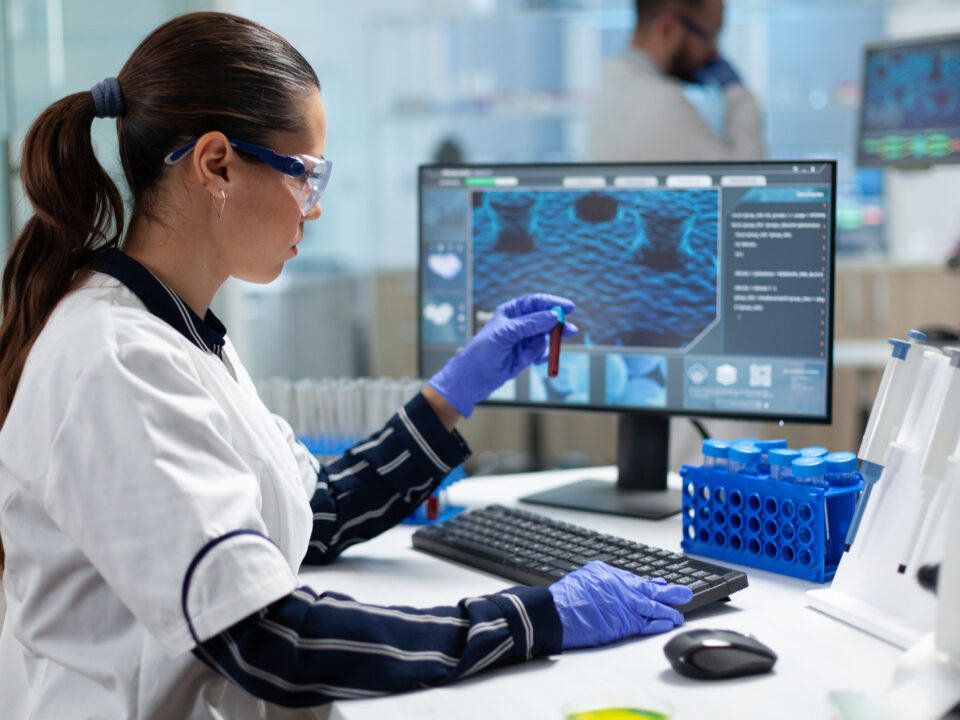A piece of proof experiences an important journey across its lifecycle. Imagine a gun collected at a crime scene. Once the investigation is complete, the gun may be moved to a proof storage facility. The following week, it may be transferred to the lab, where it is first sent to DNA testing and moves towards Firearms for further testing.
On the completion of testing, the gun then returns to the property and evidence facility where it remains until it is either submitted as proof at test or is dispositioned by property personnel.
Moving could include returning it to its owner, sending it to police use, destroying it, or some other resolution.
In this scenario, if the law enforcement agency investigating the crime uses multiple systems for different locations or tasks, this process carries multiple opportunities for problems.
The more supplies, interactions, and communications either between people at different stages of the inquiry team or between the different systems they use the greater the risk of errors, bottlenecks, or other mishaps that could seriously hinder or compromise the inquiry. Furthermore, evident links between multiple items of evidence can be overlooked or confused.
In this blog we will discuss current management issues, and what it will mean to have LIS support in your forensics investigations.
Is your forensic investigation management efficient?
Many law enforcement agencies use various systems to manage forensic inquiries. While this approach is very common, using various systems creates unnecessary challenges in forensic work. You may see various software applications used at a crime scene, another in the laboratory, and a third for the property and evidence storage facility.
The most evident and difficult issues are the increased risks of errors and delays, especially when pieces of proof need to be “handed over” between systems. In addition, there are unnecessary time and cost inefficiencies involved in preserving the interfaces themselves, as well as managing maintenance and support contracts with multiple vendors.
Benefits of a unified LIS
Forensics teams can gain important advantages if every stage of the inquiry is integrated into a single comprehensive Laboratory Information System (LIS). You can reduce the system risks because there’s no need to switch between multiple applications.
Managing costs
Merge all the functions into a single system from a single vendor also eliminates the need for various contracts and support plans while also reducing the total cost of ownership. At the time, the learning curve for users and administrators becomes much more manageable because they only need to become proficient with one system.
Reducing risk
The most important benefit, however, is risk reduction. With a broad system, no one needs to re-key data that’s already been entered somewhere else, such as records of victims, suspects, items of evidence, or other details. This decimates the need for duplicate data entry, which results in far fewer human errors.
Ease of use and compliance
Ideally, a LIS configured for forensics applications should be instinct for end-users at every stage of the inquiry with strong interfacing capabilities between different parts of the team as well as other critical systems. Browser independence is another plus that enables team members to work on any type of device, without restricting future software upgrades. Finally, a forensics LIS must be able to support the latest regulatory and technology requirements, evolving to maintain compliance.
What does a forensic inquiry look like when a broad system like this is in place?
Imagine a unified forensic workflow
With a comprehensive system, crime scene investigators can document all critical information on sites, such as weather conditions, hazards, preservation and protection methods, photos, videos, evidence collected, and techniques employed. They can document the scene and keep a log of everyone who entered and exited the scene.
In this scenario, an electronic chain-of-custody begins as soon as proof is collected. This simplifies the receiving process when the evidence arrives at the lab or property. Since all the data is already in the LIS, items can be easily received by simply scanning a barcode. Once in Property, they can be stored safely and easily recover when needed.
As evidence transfers between the multiple lab units, all stakeholders can follow the chain of custody and readily identify the current custodian and location. And since all proofs are logged in a database, lab personnel can see what other items may be associated with the case and request them from storage as needed.
In addition, law enforcement agencies typically require some interfaces between the LIS and other systems, such as the agency’s Records Management System or the Criminal Justice Information System. In such cases, organizations benefit greatly by choosing a more robust, enterprise-level LIS that minimizes unnecessary interfaces.
Forensics labs depend heavily on the LIS system to maintain the samples and data. This avocation of improved efficiency and data integrity across the proof is a key driver of the industry’s current digital transformation.




